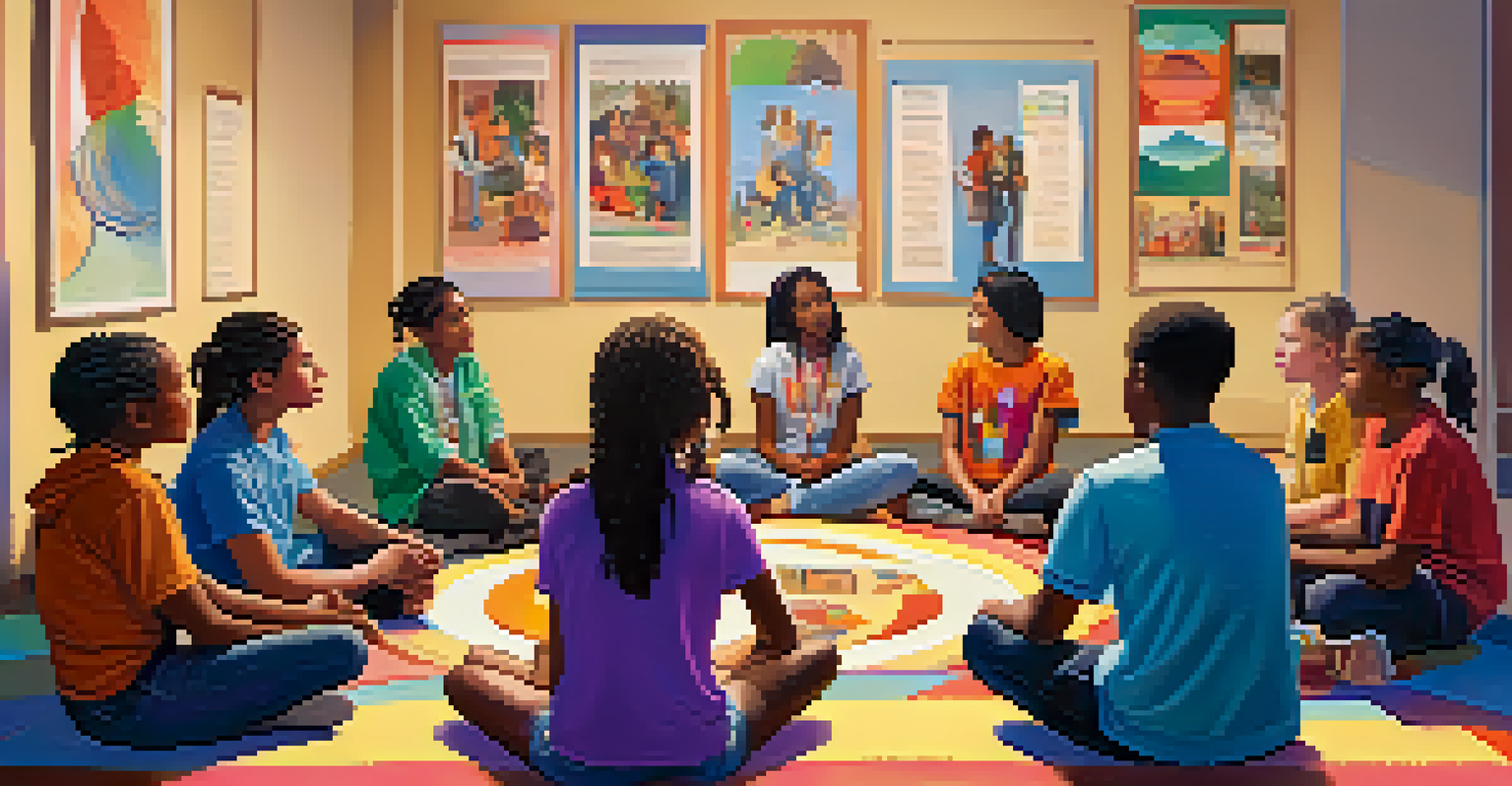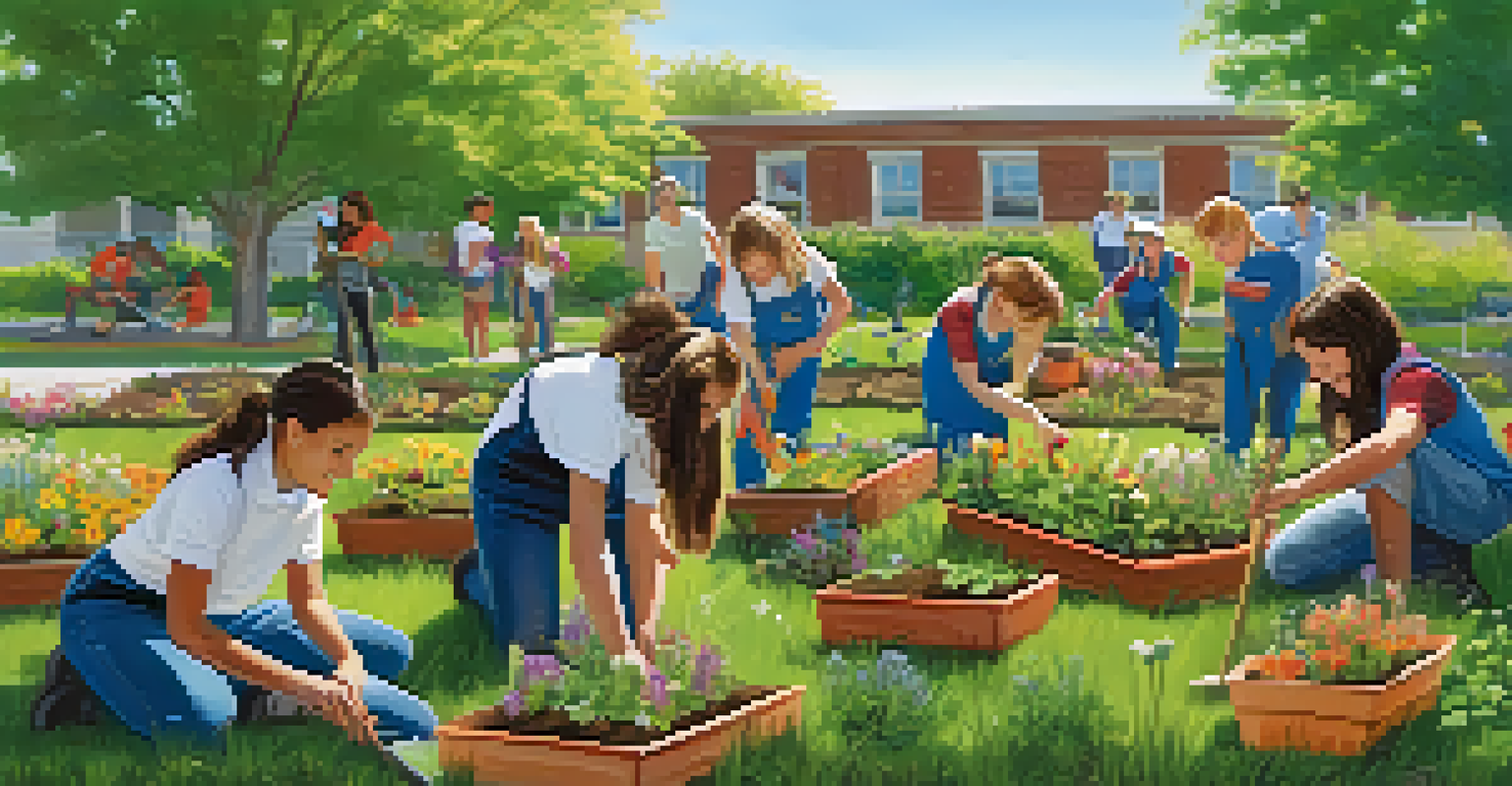Spirituality as a Tool for Conflict Resolution in Schools

Understanding Spirituality in the School Context
Spirituality in schools often refers to the search for meaning and connection among students and staff. It transcends religious beliefs and encompasses a sense of community, purpose, and inner peace. By fostering an environment that encourages spiritual exploration, schools can become spaces where students feel valued and understood.
Education is not the filling of a pail, but the lighting of a fire.
Incorporating spirituality into the school culture can help students develop empathy and compassion, which are essential for resolving conflicts. When students are encouraged to reflect on their values and beliefs, they become more aware of their emotions and those of others. This heightened awareness can lead to more thoughtful interactions.
Moreover, spiritual practices such as mindfulness and meditation can help students manage stress and emotional upheaval. When students learn to center themselves and approach conflict with a calm mind, they are more likely to engage in constructive dialogue rather than react impulsively.
The Role of Mindfulness in Conflict Resolution
Mindfulness, a practice rooted in spirituality, encourages individuals to focus on the present moment without judgment. In the context of conflict resolution, mindfulness can equip students with the tools to pause, reflect, and respond effectively rather than react emotionally. This shift can dramatically change the outcome of a conflict.

For instance, when a disagreement arises, a mindful approach allows students to take a step back and consider the perspectives of all parties involved. This not only helps in understanding the root cause of the conflict but also fosters a sense of empathy, making it easier to find common ground. By practicing mindfulness, students learn to listen actively and respond thoughtfully.
Spirituality Enhances Conflict Resolution
Integrating spirituality into schools fosters empathy and understanding, leading to more effective conflict resolution among students.
Additionally, integrating mindfulness exercises into the school curriculum can create a culture of calmness and understanding. Regular practice can help reduce anxiety and promote emotional regulation, which is crucial when navigating interpersonal disputes. As students become more skilled in mindfulness, they can apply these techniques in real-life conflicts.
Building Empathy through Spiritual Practices
Empathy is a cornerstone of effective conflict resolution, and spiritual practices can significantly enhance this skill among students. Activities such as guided reflections, group discussions, and community service projects can help students connect on a deeper level. These practices encourage them to step into each other's shoes and appreciate diverse perspectives.
The greatest weapon against stress is our ability to choose one thought over another.
For example, storytelling can be a powerful tool in building empathy. When students share their personal experiences, they create a space for vulnerability and understanding. This connection can disarm tensions and pave the way for more harmonious relationships, as students realize they are not alone in their struggles.
Moreover, fostering a school environment that values empathy encourages students to approach conflicts as opportunities for growth rather than obstacles. When students feel safe to express their feelings and share their experiences, they are more likely to work collaboratively towards a resolution, reinforcing the sense of community.
The Impact of Community Building on Conflict
Spirituality often emphasizes the importance of community, and building strong relationships among students can significantly reduce conflicts. By creating a sense of belonging, students are less likely to engage in harmful behaviors towards one another. When they feel supported and connected, they are more inclined to resolve disputes amicably.
Regular community-building activities, such as team-building exercises or group projects, foster trust and cooperation among students. These experiences create shared goals and experiences that unite rather than divide. As students learn to collaborate, they develop essential skills that will help them navigate future conflicts.
Mindfulness Promotes Thoughtful Responses
Mindfulness practices empower students to pause and reflect during conflicts, enabling them to respond thoughtfully rather than react impulsively.
Additionally, a strong community encourages open communication, making it easier for students to express their feelings and resolve issues before they escalate. When students know they have a support system in place, they are more likely to approach conflicts with a constructive mindset, paving the way for peaceful resolutions.
Encouraging Open Dialogue in Conflict Situations
Open dialogue is a crucial component of conflict resolution, and spirituality can play a significant role in fostering this environment. Encouraging students to express their thoughts and feelings openly helps to create a safe space for discussions. This approach not only resolves conflicts but also strengthens relationships between students.
For instance, implementing 'circle time' or 'talking sticks' during discussions can help ensure that every voice is heard. These practices encourage respectful communication and active listening, allowing students to express themselves without fear of judgment. When students feel valued, they are more likely to engage in constructive conversations.
Moreover, spiritual teachings often emphasize the importance of honesty and integrity in interactions. By modeling these values in conflict situations, educators can guide students toward respectful and productive dialogue. This emphasis on communication can lead to a deeper understanding of differing viewpoints and pave the way for resolution.
The Role of Educators in Promoting Spirituality
Educators play a pivotal role in integrating spirituality into the school environment to aid conflict resolution. By modeling spiritual values such as compassion, patience, and understanding, teachers can create an atmosphere conducive to peaceful interactions. Their guidance is essential in teaching students how to apply these principles in real-life situations.
Moreover, educators can introduce spiritual practices into the curriculum, such as mindfulness exercises or discussions about values and ethics. This integration not only enriches the educational experience but also equips students with tools to navigate conflicts effectively. When teachers prioritize spirituality, they help students develop essential life skills.
Community Building Reduces Conflicts
Creating a strong sense of community in schools encourages supportive relationships, which helps students resolve disputes amicably.
Additionally, professional development for educators on the importance of spirituality in conflict resolution can further enhance their effectiveness. By equipping teachers with the knowledge and skills to foster a spiritual environment, schools can create a more harmonious atmosphere where conflicts are resolved peacefully and collaboratively.
Measuring the Success of Spirituality in Conflict Resolution
Measuring the impact of spirituality on conflict resolution in schools can be challenging, but it is essential for understanding its effectiveness. Schools can implement surveys and feedback sessions to gauge student satisfaction and emotional well-being. These assessments can provide valuable insights into how spirituality influences conflict dynamics and overall school culture.
Moreover, tracking instances of conflicts before and after implementing spiritual practices can help establish a clearer picture of their impact. By observing trends over time, educators can identify which practices are most effective and make necessary adjustments. This data-driven approach can help refine spirituality initiatives in schools.

Additionally, success stories from students who have benefited from spiritual practices in conflict resolution can serve as powerful testimonials. These narratives can inspire both students and educators to continue prioritizing spirituality in their approach to resolving conflicts, reinforcing its importance within the school community.